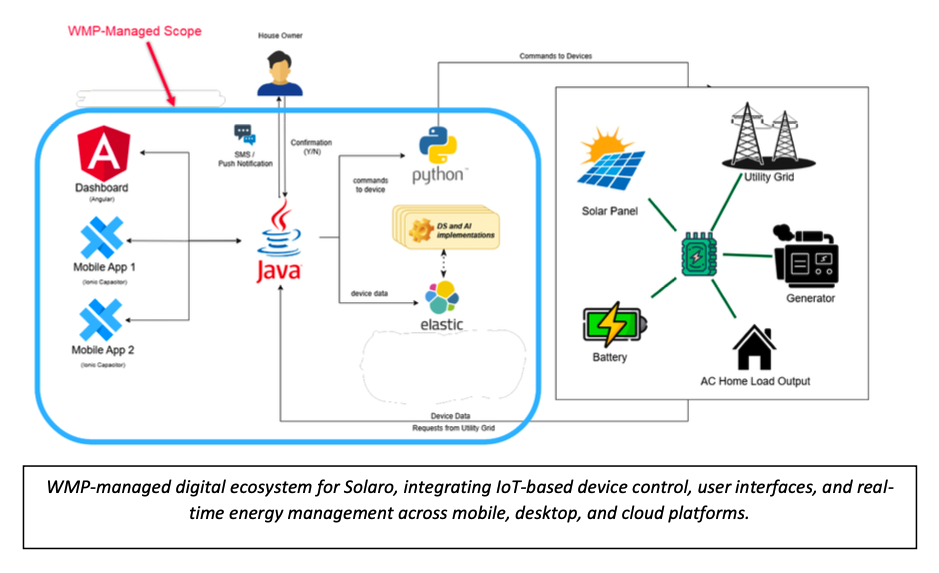Introduction
Solaro, a forward-thinking renewable energy provider, set out to transform how underserved communities access and manage electricity. The company’s vision was both ambitious and socially impactful: to install solar panels, batteries, and inverters in individual homes, allowing residents not only to consume clean energy but also to contribute surplus power back to the main grid. This decentralized, sustainable model aimed to reduce reliance on traditional fossil-fuel-generated electricity and provide households with a new level of energy autonomy and financial participation.
To bring this vision to life, Solaro partnered with We Make Platforms (WMP), a digital product and technology consultancy with a strong track record in designing scalable tech solutions. WMP’s role was to build an integrated digital platform that would enable real-time energy monitoring, facilitate seamless customer interactions, and support complex financial transactions, including issuing credits for backfed power. With a focus on IoT, intuitive interfaces, and secure payment processing, WMP’s contribution was central to the success of Solaro’s project.
Project Goals and Architecture
Solaro’s model was simple in concept but complex in execution. Each home was to be fitted with solar panels, batteries, and an inverter, all of which were connected to the main grid. The energy generated would first power the home; any surplus energy would be stored in the battery. Once the battery reached full capacity, Solaro could sell the excess energy back to the grid on behalf of the homeowner. In return, the grid operator would pay Solaro for the kilowatt-hours backfed, and Solaro would then credit a portion of this payment to the homeowner.
WMP was tasked with developing the digital infrastructure to support this end-to-end system. The scope included a robust IoT backend, user-friendly interfaces for mobile and desktop, real-time data integration, payment gateways, and customer support tools.
Field Commissioning and Device Onboarding
To streamline deployment and ensure each home’s system was correctly set up, WMP developed a dedicated field technician app as part of the backend infrastructure. This app allowed technicians to commission each home site by registering installed equipment and entering relevant installation details. Once registered, the app securely connected the IoT devices—solar inverters, batteries, and meters—to Solaro’s backend. This ensured each system was authenticated, registered to the correct household, and began transmitting real-time dataimmediately after installation. The commissioning workflow reduced setup time, minimized errors, and provided a reliable handoff from installation to live monitoring.
Leveraging IoT for Energy Monitoring and Backfeeding
A major component of WMP’s involvement was enabling IoT-based real-time monitoring and control. Each inverter installed in the homes was equipped with a cellular IoT modem that gathered and transmitted key data to Solaro’s cloud-based system. This data included:
- Solar panel energy production
- Battery charge status
- Incoming grid power
- Outgoing (backfed) energy to the grid
WMP developed a backend system using Spring Boot 3 and modern microservices architecture to process and analyze this data in real-time. The backend allowed Solaro to make decisions on whether to consume, store, or feed electricity back to the grid. This automation and visibility were crucial in optimizing system performance and ensuring that Solaro could fulfill its obligations to the grid while maximizing returns for homeowners.
This IoT-powered solution created a symbiotic relationship between Solaro, its customers, and the utility provider. By efficiently tracking the direction and volume of energy flows, the system ensured that every kilowatt-hour was accounted for and monetized correctly.

